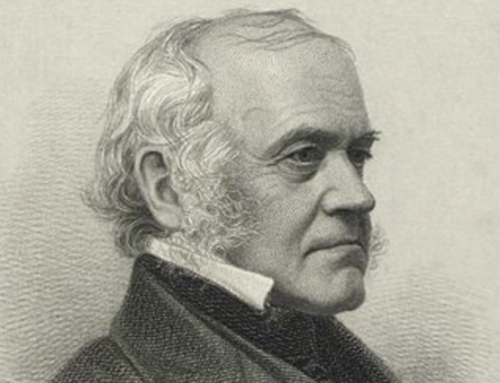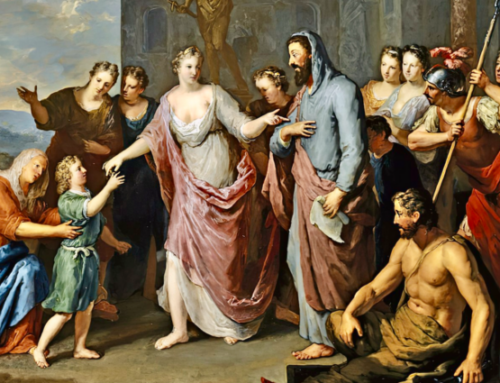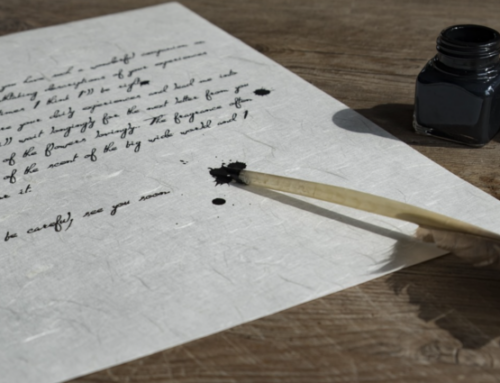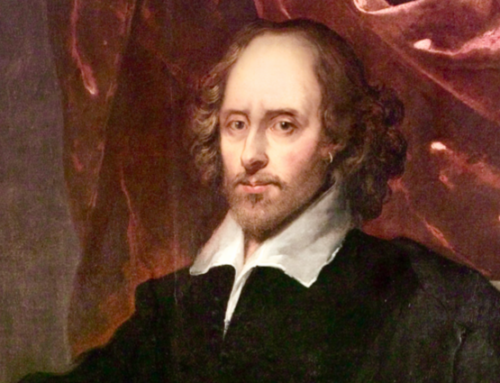Is there a century in human history which can claim to be better than all the others? Many, especially Catholics, might argue that the thirteenth century deserves such an accolade. According to Church historian, Alan Schreck, this was “the greatest century of spiritual, cultural, and intellectual advancement in the history of Western civilization”. It was “the flower of the Middle Ages and the height of Christendom”. Although he acknowledged “dark moments” in this brightest of centuries he insists that “the light of the achievements of this century far outshines the darkness”.
Another historian who agrees with him is James J. Walsh, who wrote a book entitled The Thirteenth, Greatest of Centuries. This was the century “that gave us the cathedrals, the universities, the great technical schools that were organized by the trades guilds … and art carried to such heights that artistic principles were revealed for all time”. Gothic architecture, scholastic philosophy, great men and women, great saints. Professor Walsh rest his case: “Is it at all surprising that we should claim for the period which, in addition to all this, saw the foundation of modern law and liberty, the right to be hailed – the greatest of human history?”
Let’s begin by agreeing with Professors Scheck and Walsh. Let’s look at all that was especially good about the thirteenth century.
In 1215, Pope Innocent III called the Fourth Lateran Council which would prove to be the most important and influential Church council of the Middle Ages. In the same year, in England, King John signed the Magna Carta at the behest of the Church and the barons, albeit reluctantly. This groundbreaking and foundational document, limiting the power of the monarchy and laying the foundations for the English legal system, was partially drafted by the Archbishop of Canterbury, Stephen Langton, who was the first witness to sign it. Such was Archbishop Langton’s role in this historic event that the political philosopher Ernest Barker has called Langton the “father of English liberty” whose role was crucial to what Professor Walsh hails as the laying of “the foundation of modern law and liberty”.
Pope Innocent III also gave his powerful support to the new mendicant orders. He had given his blessing to St. Francis from the very beginning of the great saint’s apostolate, when only a handful of pioneering disciples accompanied the beggar of Assisi. He was also very supportive of St. Dominic, the founder of the Dominican order. Such was the meteoric rise of both these mendicant orders that their presence became part of the very fabric of life over the following decades. Franciscan and Dominican friars were everywhere, begging on the streets, helping the poor, teaching in the newly-founded universities and rising to the highest echelons of the Church’s hierarchy. In 1271, Blessed Gregory X, a third order Franciscan, was elected to the papacy, and his successor, Blessed Innocent V, was the first Dominican to become pope. It was to the Dominicans, in a special sense, through the teaching and preaching of St. Albert the Great and St. Thomas Aquinas, that we owe the rise of scholasticism and its rooting of the Church ever more strongly in the indissoluble union of faith and reason (fides et ratio), but the Franciscans were also represented prominently by St. Bonaventure, Blessed John Duns Scotus and Roger Bacon.
This briefest overview of what was good in the “greatest century” would be incomplete without a brief litany of the century’s greatest saints. In addition to those already mentioned, it would be a gross and grotesque sin of omission to fail to bow with due deference and reverence to Anthony of Padua, Elizabeth of Hungary, Clare of Assisi, Louis IX and Celestine V, all of whom demand more than the merest passing mention that they are afforded here.
Moving from the good to the beautiful, the thirteenth century was also the age of gothic architecture. “The truth about Gothic,” wrote G. K. Chesterton, “is, first, that it is alive, and second, that it is on the march. It is the Church Militant; it is the only fighting architecture. All its spires are spears at rest; and all its stones are stones asleep in a catapult.”
Apart from the great and glorious march of the gothic across the landscape of Christendom, the century also saw the embryonic beginnings of the great western tradition in painting. Florence became a great centre of artistic creativity, exemplified by the work of Cimabue, whose celebrated Madonna was borne in triumph from his studio to the Church of Santa Maria Novella. Cimabue’s great Florentine contemporary, Gaddo Gaddi, remembered for his Coronation of the Virgin, would be eclipsed, as would Cimabue himself, by the great Giotto, a friend of Dante, both of whom were active in the late thirteenth century but whose greatest work was produced in the early decades of the following century. Other centres of artistic excellence flourishing at this time included the cities of Pisa, Lucca and Siena where artists, such as Guido, Ugolino, Segna, Duccio and Berlinghieri were producing masterpieces of devotional art.
As for poetry, two of the greatest saints of the century also wrote some of its finest poetry. St. Francis of Assisi’s “Canticle of Brother Sun” and St. Thomas Aquinas’ wonderful Eucharistic hymns have both stood the test of time, retaining that timelessness which is the mark of all great art, remaining as fresh as they are profound. St. Thomas composed the Latin hymn, Pange Lingua, for Vespers of Corpus Christi, the last two verses of which form a separate hymn, Tantum Ergo, which is sung at Benediction of the Blessed Sacrament. O Salutaris Hostia, another hymn sung at Benediction of the Blessed Sacrament, comprises the last two verses of Verbum Supernum Prodiens, Aquinas’ hymn for Lauds of Corpus Christi. In addition, St. Thomas composed the propers for the Mass of Corpus Christi, including the sequence Lauda Sion Salvatorem. It is truly astonishing that this great saint, who is rightly lauded as the Angelic Doctor, could be the greatest philosopher and theologian in the history of the Church and also one of its greatest poets.
So much for all that was good and beautiful in “the greatest of centuries” but what of the bad and the ugly?
As we consider the dark underbelly of the “greatest century”, we might be reminded of the opening words of Dickens’ classic novel, A Tale of Two Cities because the thirteenth century can certainly be seen as the best of times and the worst of times. As Alan Schreck reminds us, even as he calls the thirteenth century the “greatest”, that “there were dark moments, such as the crusades and the Inquisition launched against heresies”. It is to these dark moments that we now turn.
“It was the age of wisdom,” writes Dickens, “it was the age of foolishness….” Even as the universities were opening, the mendicant orders flourishing, and the life of the mind flowering, there were times when foolishness prevailed and in which pride was allowed to take pride of place, with the usual tragic consequences.
Pope Innocent III called the Fourth Crusade to liberate Jerusalem from the infidel but, when it was launched in 1202, it unleashed the rabid dogs of war, and worse than war. Long before the crusaders reached the Holy Land they were attacking fellow Christians. The siege and subsequent sacking of Zadar, a city in Croatia, was the first time that a Catholic crusading army had attacked a Catholic city. Although Pope Innocent had sent letters explicitly forbidding the siege and threatening excommunication of those who disobeyed, the crusaders (with a few notable and noble exceptions) ignored him. After the city was sacked, the “crusaders” fought amongst themselves in a dispute over the distribution of the plundered property they’d stolen. It beggars belief that anyone could really claim that the grace of God was with such people or that their military endeavour was a crusade in any meaningful sense of the word.
As if this unpromising start were not bad and portentous enough, worse was to follow. Long before the crusaders reached the Holy Land, they were lured into the sordid political intrigues of Constantinople. They sacked the ancient city with diabolical abandon. They murdered, raped, looted and destroyed on a scale which even the barbarians of old would have found excessive. Even the Turks, had they taken the city, could not have been as cruel towards the Christians of Constantinople as were these Christian “crusaders”.
Further crusades followed throughout the century, culminating in the final defeat of the Christian army at Acre in 1291. According to Alan Schreck, painful lessons were learned from the ultimately futile efforts to liberate the Holy Land by force of arms: “The lesson of these crusades to capture the Holy Land has remained with the Church until the present day. Never again has the Catholic Church attempted to wage a war to capture territory, even the Holy Land, for the sake of Christ; nor has it condoned warfare among nations for this reason.”
It should be added, however, that the Christians were successful in the “crusade” on its western front. In 1212 an army led by the kings of Aragon and Castille defeated a Muslim army at Las Navas de Tolosa in Spain. This would prove to be the turning point in the struggle to wrest the Iberian Peninsula from Islamic control and by 1248 most of Spain was in Christian hands.
We’ll conclude our survey of the dark underbelly of the “greatest century” with a brief consideration of the role of the Inquisition.
It is the Church’s responsibility to refute error and to counter its harmful effects. This is best done, however, through the use of reason employed with charity. The great philosophical and theological weapons provided by the great scholastics of the thirteenth century, such as St. Thomas Aquinas, provide all that is necessary for the refutation of error, together with sanctity and the edifying power of beauty. The use of barbaric methods of “persuasion”, such as torture, should always be anathema. Christ did not crucify his enemies; he was crucified by them. He took up his own cross and called upon his followers to take up theirs; he never called on them to nail sinners to the cross.
With these sobering thoughts in mind, we should reconsider our approach to the thirteenth century. Was it the greatest? Possibly. Was it the best? Well, it wasn’t the worst.
Indeed, we should remind ourselves that all of history, in both the best of times and the worst of times, is a tale of two cities. All that is good and beautiful belongs to the City of God; all that is bad and ugly belongs to the City of Man. This is true in the greatest as in the least of centuries.
Joseph Pearce’s latest book, The Good, the Bad and the Beautiful: History in Three Dimensions, is newly-published by Ignatius Press.
The Imaginative Conservative applies the principle of appreciation to the discussion of culture and politics—we approach dialogue with magnanimity rather than with mere civility. Will you help us remain a refreshing oasis in the increasingly contentious arena of modern discourse? Please consider donating now.
The featured image is “Cimabue’s Madonna Carried in Procession” (1853-55) by Frederic Leighton, and is in the public domain, courtesy of Wikimedia Commons.








I am in full agreement with the fair overall evaluation of Mr. Pearce. I would say the 13th century marked the high point of Roman Catholicism´s effort to realize the ideal of Christendom as a unified European polity, with the Pope as the spiritual head and the Emperor as the temporal head. All society was pervaded by the idea of leading of mankind to his supernatural end – the contemplation of God and the salvation of souls. The age saw the Summa Theologica of St. Thomas Aquinas, the apex of the university, the Gothic Cathedral, the School of Notre Dame in music, great saints and new orders like the Franciscans and Dominicans, the flowering of chivalry and knighthood. After the 13th century, the crisis of Catholic Christendom seemed to begin with the Avignon Papacy, the Western Schism, the devastations of the Black Death – so the 13th century seems to stand as the apex of high medieval culture which left an extraordinary legacy. Together with these achievements, it was also an era of intolerance with dark events – the Albigensian Crusade, a number of mob massacres, blood libels, and also expulsions of Jews, and the misfires of the Crusading movement against other Christians. The Wheat and the Tares grow together until the harvest.
Aquinas deserves a paragraph of his own, with the obligatory mentions of Aristotle and Maimonides.
Without him, there was no 12th century naissance, only a renaissance of 5th century Augustine. Only Aquinas provided the fusion of Christian Philosophy with Aristotle and Maimonides. With Aquinas, the West was both awakened and re-awakened in that century by going back to the first principle of Jerusalem and Athens – (via Maimonides, who died in 1204, and Aristotle’s lost logic of Athens). Without Aquinas, based on the cornerstone of Christ, all of the cathedrals, all of the schools, all of Western Christendom would have been based solely on Augustine and the Roman Empires. A more powerful Charlemagne so to speak.
Yes, Charlemagne, Augustine and Rome were a great foundation stone, but Rome by itself lacked this trialectic fusion. The 12th century fusion of these three was better than Augustine’s Platonic fusion of the 5th century, and it provided a different school of thought, a different balance of Jerusalem, Athens and Rome. Without Maimonides, Aristotle and Aquinas, the Western Civilization would have just been a copy … of the 5th century Rome under Augustine.
A great and informative essay and some great and informative comments following it. A highly balanced and judicious treatment of a historical period. I shall look for Mr. Pearce’s new book.
The first congratulations to Mr. Pearce for his Last book and i am historian i am totally right with his main thesis even i would get long to the XI and XII century. I have ever defended that the Best centuries of the history with his wrongs were II, XI, XII, and XIII i will look his New book and i take the chance to apologize for annoying him with my request of participating in the discussion of his book “The faith of our Fathers” in Catholic Book Club in Goodreads. Yours sincerely Fonch.